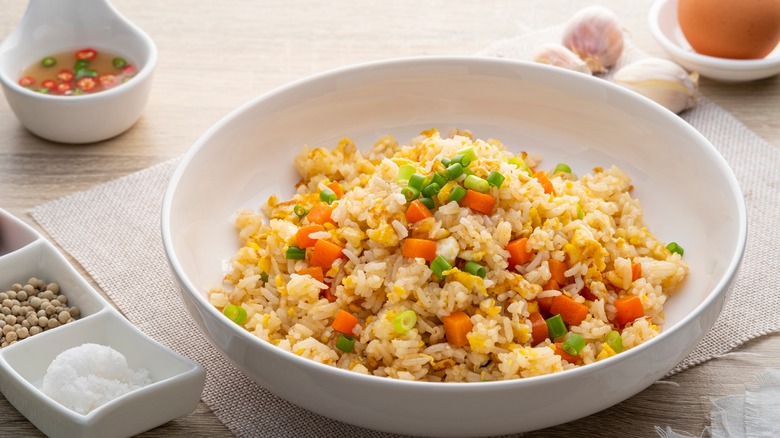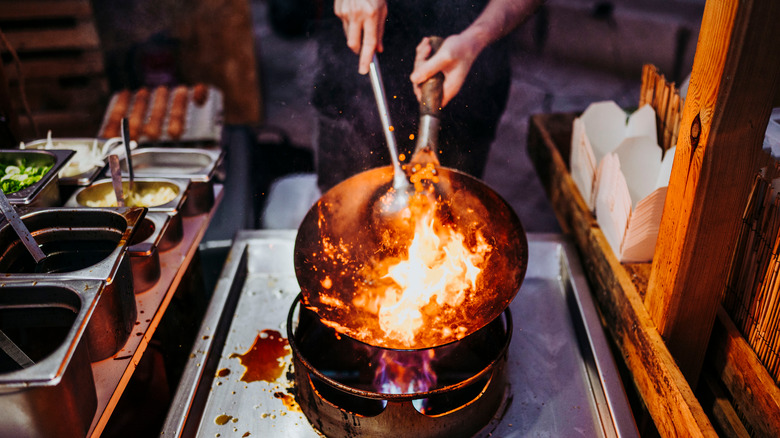Why Fried Rice Tastes Better At A Restaurant Than At Home
While it can be a fun adventure to try and make your own Chinese food at home, for most of us it just doesn't live up to the complexly rich food from our local Chinese restaurant. Even a dish as simple as fried rice often can't live up to what you order. Don't get yourself down though, because there's a good reason for this.
According to Time, as of 2016, there were more than 45,000 Chinese restaurants currently in the United States. From coast to coast, you don't have to go far to find some General Tso's chicken, but that wasn't always the case. NPR reports that in the early 19th century, approximately 300,000 Chinese immigrants came to the United States. These immigrants were often met with racist and xenophobic outrage, which eventually provoked a legal response that actually helped spread Chinese restaurants and culture even further in the United States.
According to NPR, the U.S. government passed immigration laws that severely limited immigration from China. In the 1910s though, a loophole was added that allowed Chinese residents to come to the United States as long as it was through a business like a restaurant. From there, the number of Chinese restaurants in the country would double in the next decade and then double again in the next decade. Chinese restaurants became a means of entry for immigrants, and other Americans thrived on the spread of this delicious cuisine.
The secret is 'wok hei'
So just what is it about these restaurants that makes their food so much more delicious than the fried rice we can prepare at home? The answer: high heat, expert tosses, and something known as 'wok hei.'
As J. Kenji López-Alt writes for Serious Eats, expert cooking with a wok (and the gas range it requires) is one of the main reasons that fried rice from a Chinese restaurant tastes so much better than what you can make at home. He says that using high, direct heat helps facilitate an aroma, flavor, and crispy texture that can only come from 'wok hei,' which describes the signature tastes and smells from cooking with a wok.
López-Alt writes in the New York Times that much of this flavor comes from the Maillard reaction caused by the specialized gas range and wok, and from the way the food is tossed by the chef. As the food rises it comes in contact with the steam rising from the food which is then vaporized, along with the fats, as the food comes into contact with the hot wok once again. This tossing is so precise when done by seasoned chefs that the physics of tossing fried rice was studied by researchers at the Georgia Institute of Technology.
There are some ways to replicate the effects of wok hei at home, but many of us may be satisfied to know that our takeout will always be better.

